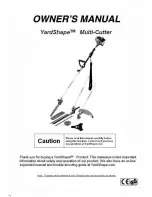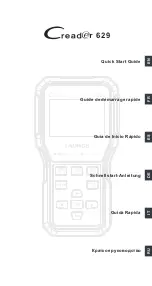
Operational procedures
33
850-164692 / Rev.B
The polynomial model is a flexible function capable of
modelling complex function shapes. The polynomial model is
only used to check in the
Plot
view that the estimated
polynomial model has the same shape as the shape of the beam
model. If the shape of the polynomial model is very different
from the shape of the beam model, this indicates that either
insufficient data have been collected, or some data points may
be associated with errors (broken cables or channel wires
mixed).
The beam model is the model actually used by the echo sounder.
The calibration program will adjust the parameters in the beam
model to minimise the RMS-error calculated on the recorded
data points. The adjusted parameters, the RMS-error, and the
data points having maximum and minimum deviation from the
model are shown in the
Information
view. The adjusted
parameters resulting from the beam model are the parameters,
which can be transferred to the echo sounder and used for the
transducer during operation. Information on data deviation from
the beam model will indicate how well the beam model fit the
recorded data. This can be used to evaluate the validity of the
recorded data points.
The data evaluation should start using the
Plot
view and the
polynomial model to check the shape of the polar plot. A
circular transducer should have a circular beam and an elliptic
transducer an ellipse, both with only insignificant offset angles.
If a circular transducer in the
Plot
view shows an ellipse with
approximately 45 or 135 degrees axis, the reason may be one
missing quadrant in the transducer or one missing quadrant in
the receiver. This symptom should also give approximately 2 dB
lower TS, i.e. 1dB lower transducer gain to compensate.
If a circular transducer in the
Plot
view shows an non circular
shape, and in addition substantial offset angles both athwart and
alongship, this indicates there may be something wrong in the
way the transducer is connected. In this case, you must select
the
View
menu and check the calibrated beamwidth, offset and
gain values. If one quadrant of the transducer is inversely
connected, the beamwidth will be approximately one degree too
wide, the offset angles will be approximately one degree off
centre in both directions and the calibrated gain can be in the
order of 6 dB lower than the default gain.
If two of the quadrants have been mixed up, the reference
sphere’s movements inside the beam will be incorrect. This can
be confirmed when the reference sphere is suspended in such a
way that you can move it in a specific direction. This direction
is either transversal or longitudinal in the transducer beam.
Summary of Contents for ER60
Page 2: ......
Page 3: ...850 164692 ER60 Scientific echo sounder Operator manual...
Page 181: ......
















































